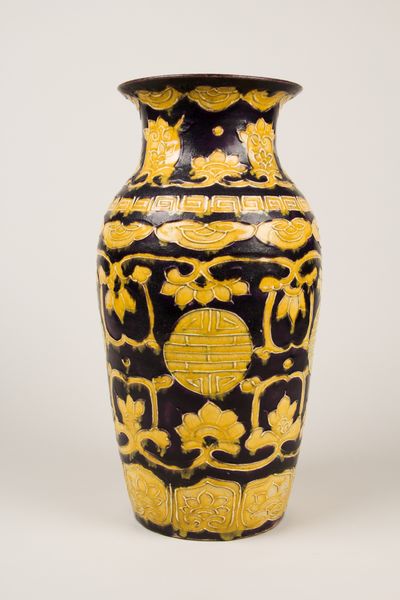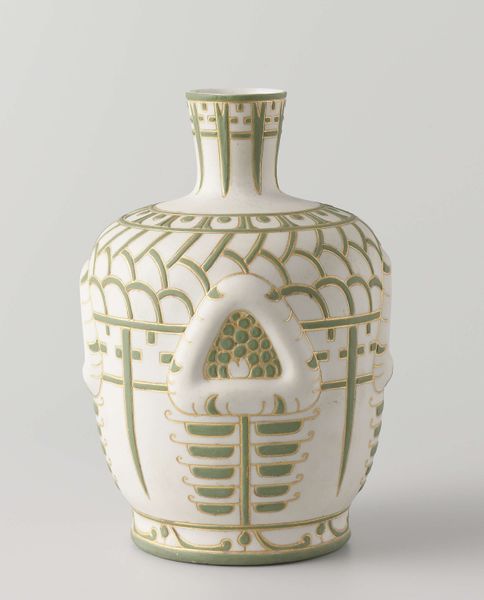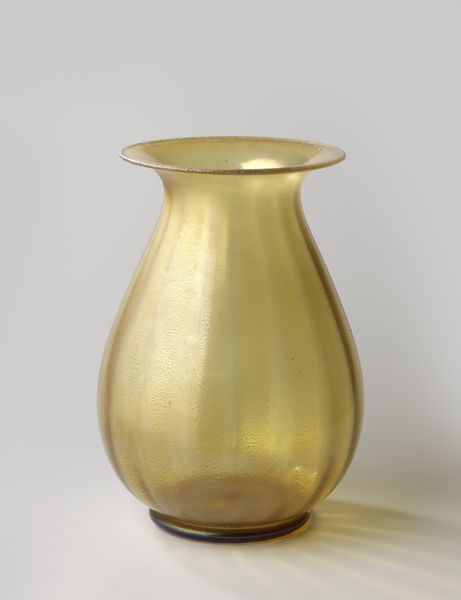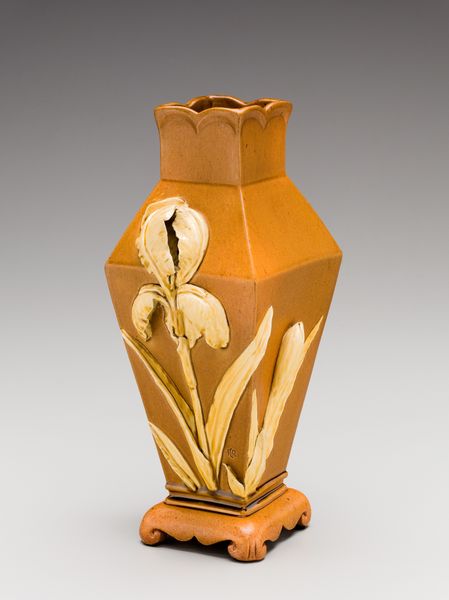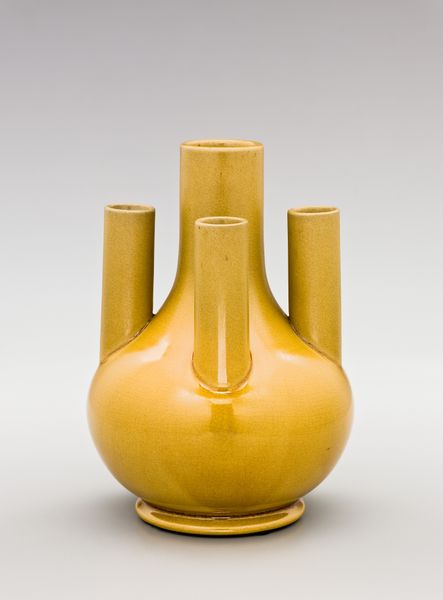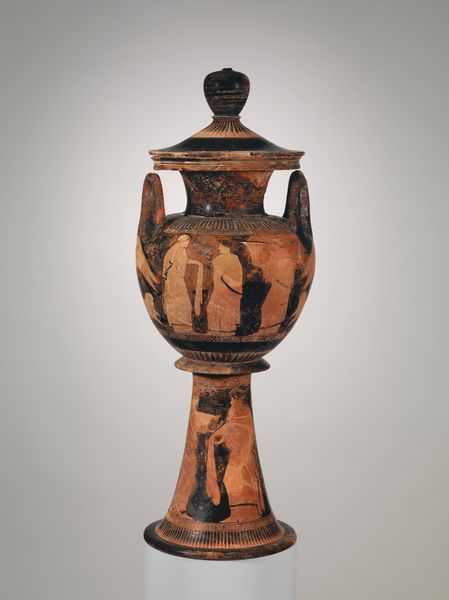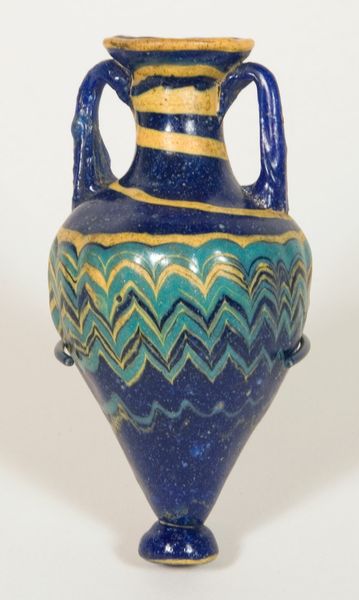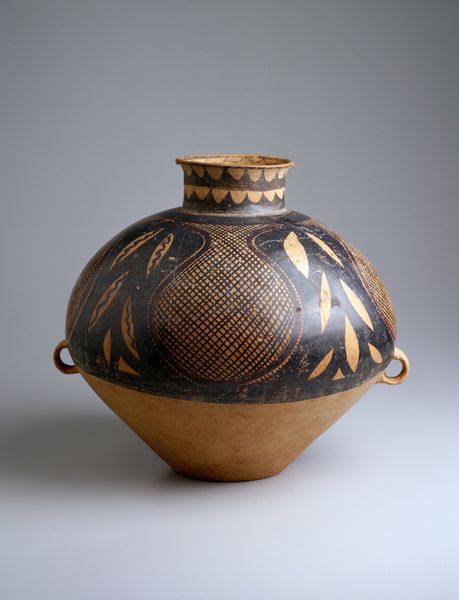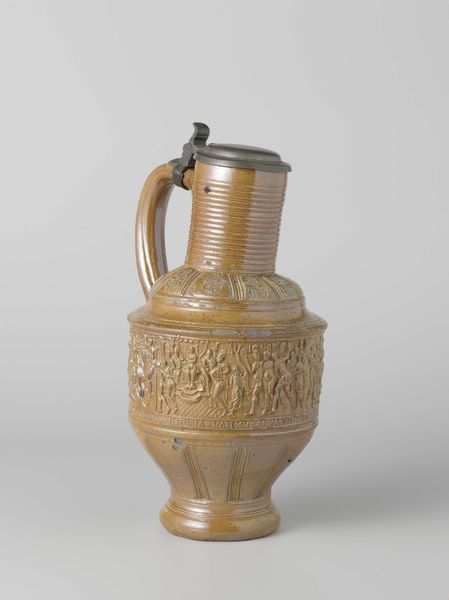
Vase with Incised Design and Salamander Handles in Kochi Style 1800 - 1849
0:00
0:00
ceramic, earthenware
#
asian-art
#
ceramic
#
japan
#
earthenware
#
geometric
#
ceramic
Dimensions: H. 14 1/4 in. (36.2 cm)
Copyright: Public Domain
Curator: This exquisite piece is titled "Vase with Incised Design and Salamander Handles in Kochi Style," crafted by Eiraku Hozen sometime between 1800 and 1849. It currently resides here at the Metropolitan Museum of Art. Editor: My first impression? The boldness of the yellow glaze. It's arresting and immediately draws the eye, a potent choice. It feels joyous almost, while the geometry suggests imposed control. Curator: Indeed, the yellow is striking. Observe the incised geometric patterns that bisect the curvature of the vase itself. It adds structure and a visual layering to the earthenware form. Semiotically, this juxtaposition presents something of a binary. Editor: Agreed, this could point to social meanings relevant to the period. Was this intended for a privileged, perhaps even imperial, audience? Yellow, historically, carried complex significance in hierarchical social structures in Japan. Curator: The material bears significance as well. Consider the handles; rendered as salamanders, their deep russet contrasts profoundly with the primary field of the vase. This subtle counterpoint is far from accidental. Editor: These decorative elements move me to contemplate broader interpretations of identity and symbolism at the time. Does the amphibian motif suggest cultural metaphors of adaptability and transformation? Curator: It could, but one should remain careful when reading in overt allegories. Though symbolism and cultural context inevitably intersect, we risk reading anachronistically, instead the incised pattern yields, fundamentally, an investigation into visual harmony. Editor: But isn't this pursuit of “harmony” also culturally embedded? The aesthetic choices reveal an individual’s, and indeed a society’s, negotiation of self. By acknowledging the vase as more than just the visual form we expose deeper truths about power and representation in Edo period Japan. Curator: An interesting perspective. Thank you for illuminating, if not altering, my interpretation of Eiraku Hozen's artistry. Editor: And thank you. It's a fruitful reminder that formalism, too, is always itself shaped by social narratives, explicit or otherwise.
Comments
No comments
Be the first to comment and join the conversation on the ultimate creative platform.
